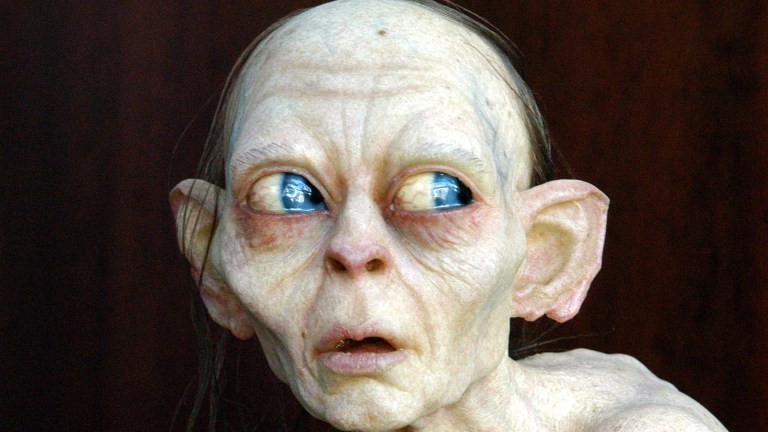Lord of the Rings: The Hunt for Gollum Is a Great Choice for a Spinoff Movie
Lord of the Rings: The Hunt for Gollum is a much better idea than it may initially appear...

A new Lord of the Rings spin-off movie has been announced, and it’s getting the old gang back together; the producers/writers of both film trilogies, Peter Jackson, Phillipa Boyens, and Fran Walsh will be producing once more, and directing duties will be taken over from Jackson by Andy Serkis, who played Gollum in both trilogies and who was also second unit director on The Hobbit films. Since then, he has directed three movies (2017’s Breathe, 2018’s Mowgli: Legend of the Jungle and 2021’s Venom: Let There Be Carnage) so he is well prepared to take on this one.
Serkis will also star in his original role of Smeagol/Gollum, and the film is currently tentatively titled The Lord of the Rings: The Hunt for Gollum. If that title means what we think it means, it could be a really exciting prospect.
The (Presumed) Story
We are assuming, on the basis of the title, that this film will cover Gandalf and Strider/Aragorn’s search for Gollum, after Gandalf realized that Bilbo’s ring was a Ring of Power and that Sauron would be looking for Gollum for questioning. Gandalf wanted to question Gollum himself to establish exactly which Ring Bilbo had, as well as keep him away from the Dark Lord.
In the film version of The Fellowship of the Ring, this was glanced over very quickly during Gandalf’s conversation with Frodo before leaving the Shire. Gandalf tells Frodo, “I looked everywhere for the creature Gollum. But the enemy found him first. I don’t know how long they tortured him. Amidst the endless screams and inane babble, they discerned two words” – these two words being “Shire” and “Baggins,” and we catch a brief glimpse of poor Gollum being tortured on a rack and screaming them out. If you haven’t seen the film in a while, these are the lines that are immediately followed by Frodo’s astute observation, “Shire – Baggins – but that will lead them here!”
However, the books and of course, because this is J.R.R. Tolkien, the Appendices to The Lord of the Rings give a bit more detail. Gandalf tells Frodo that he has seen and spoken to Gollum, and that “I tried [to find him] long ago; but I have managed it at last.” Their conversation by itself, even though it is only reported second-hand, is both drily humorous and mildly horrifying; Gandalf tells Frodo that he “endured him as long as I could, but the truth was desperately important, and in the end I had to be harsh. I put the fear of fire on him, and wrung the true story [of his and Bilbo’s riddle game] out of him, bit by bit, together with much snivelling and snarling.” Gandalf also found out from Gollum that he had been to Mordor, and that Sauron therefore knew Bilbo’s identity.
Later, during the Council of Elrond, Gandalf provides more details of the search for Gollum itself, and this is where we find out that Aragorn had helped him—in fact, that it was Aragorn’s advice that they should look for him. The two of them “explored the whole length of Wilderland, down even to the Mountains of Shadow and the fences of Mordor,” until eventually Gandalf gave up and switched his focus to working out how to identify the One Ring, and Aragorn continued alone. Appendix B, “The Tale of Years,” adds that Gandalf and Aragorn searched “in the vales of Anduin, Mirkwood, and Rhovanion to the confines of Mordor” and that “at some time during these years Gollum himself ventured into Mordor, and was captured by Sauron.”
Aragorn had also just about given up on the search, after lengthy wandering around the Black Gate and the Morgul Vale of Mordor, when he found Gollum in the Dead Marshes and wrangled him into submission, telling the Council “he bit me, and I was not gentle.” He brought Gollum to Gandalf, and “was glad to be rid of his company, for he stank.”
After Gandalf questioned Gollum, he handed him over to the Wood Elves, King Thranduil and his son Legolas, who promptly lost him—Gollum somehow managed to engineer his escape in cahoots with some Orcs. “The Hunt for Gollum” could, in theory, refer to the Elves’ failed attempts to recapture him before dispatching Legolas to Rivendell to ‘fess up to their mistake, but we think that is unlikely. Gandalf and Aragorn’s long search for him, looking for answers about Bilbo’s Ring, seems much more likely movie material.
The Drawbacks
There are, of course, some drawbacks to this choice. First and foremost is the timescale. With the same team producing the film and the same star, we have to assume that this will be a direct prequel (or inter-quel? It does take place after The Hobbit trilogy) to the 2001-2003 Lord of the Rings films. Those films greatly condensed events between Bilbo’s birthday party, when Gandalf begins to realize there is something seriously off about Bilbo’s Ring, and Gandalf’s visit to Frodo that results in him leaving the Shire and heading for Rivendell.
In the book, 17 years pass between these two events. Frodo is 33 years old at Bilbo’s birthday, and 50 by the time he goes off on his own adventure (the same age Bilbo was when he went on his in The Hobbit). The films had good reason for changing this—for one, Elijah Wood, playing Frodo, was 19 when filming started and could not really pass for 50 (though we admit, he’s 43 now and looks pretty much the same). More importantly, the opening scenes of The Fellowship of the Ring were long enough as it is, and a movie needs different pacing than a book. Cutting down 17 years to an implied length of time of a few months gives the story a much greater sense of urgency.
The problem this leaves for doing a film about the hunt for Gollum, though, is that Gandalf and Aragorn’s desperate search is supposed to take eight years, not a few months. Middle-earth is a big place and they are getting around on foot (we won’t speak of seasons 7 and 8 of Game of Thrones, and how the plausibility of your fantasy world comes crashing down if people can suddenly cross it as quickly as if they had personal transporters from Star Trek: Discovery).
Having said that, the planned production here is a film, not a television series. A television series on this topic—one of many Amazon was once rumored to be looking at before they settled on the Second Age for The Rings of Power—would be expected to cover a long period of time and have different episodes set in different places. But a film, just like The Fellowship of the Ring back in 2001, needs sharper, tighter pacing, so cutting the journey down from eight years to a few months might not be a bad thing after all.
The other slight niggle is casting. Andy Serkis’ Gollum is filmed using motion capture and the character itself created using CGI, so Serkis can continue to play Gollum for as long as he likes, or at least as long as he can move and speak. But Ian McKellen and Viggo Mortenson are both more than 20 years older than when they first went to Middle-earth—not only might they be reluctant to throw themselves into Tolkien’s world again (this would be the seventh film for McKellen, who did not have the greatest time filming The Hobbit according to the DVD extras), but they would look much older in a story meant to be set during the first half hour of The Fellowship of the Ring. They would probably have to be re-cast, which is fine, but slightly confusing when new actors are put together with Serkis in the same role. Still, that isn’t necessarily a deal-breaker—just ask viewers of the 2019 version of The Lion King, which saw the return of original Mufasa James Earl Jones alongside an otherwise new cast. Of course, Jones didn’t have to appear in the flesh…
Why This Is a Great Choice
The benefits to doing this story are huge. For one, it follows established and beloved characters on a quest that is central to the main story of The Lord of the Rings. The Rings of Power has aimed to do something similar, but because its main characters are Elves who we are seeing in their youth rather than in the much later period of The Lord of the Rings, the writers have made some choices about their characters in their younger days that some fans have not been too happy with. The Hunt for Gollum, if we are right about what that means, would be following Gandalf the Grey and Aragorn in his Strider persona—beloved characters we didn’t get to see as much as we wanted in those roles before the Council of Elrond saw Strider come out as royal heir Aragorn, and that ill-fated trip to Moria saw the end of Gandalf the Grey.
The title also implies exciting action. It is a hunt, a chase, across the darkest and most sinister parts of Middle-earth, during which Gollum will either be captured (if they follow the film’s implication) or simply walk into Mordor (the book’s version, but unlikely to be followed in the film! After all, one does not). There, he will be tortured, and then released and found by Strider in the Dead Marshes, and tortured some more but by the “good guys” this time. Never forget, Tolkien can be shockingly dark when he wants to be. Gandalf and Strider will fight over whether they should carry on searching or give up and focus on research in Minas Tirith; Gollum will bore them both to tears with his whining; they could even cover Legolas losing him if they want to. The possibilities are endless!
The fact that this will be a completely different setting from Amazon’s The Rings of Power is a good thing, too. We like The Rings of Power (other opinions may differ, all are valid) but two Lord of the Rings productions from different companies, with different actors, covering the same material really would melt our brains. This way, we can have two largely separate stories set in Tolkien’s rich world, which can complement, rather than compete with, each other. All in all, this is a story we’re excited to see brought to life.
Lord of the Rings: The Hunt for Gollum will hit theaters in 2026.
